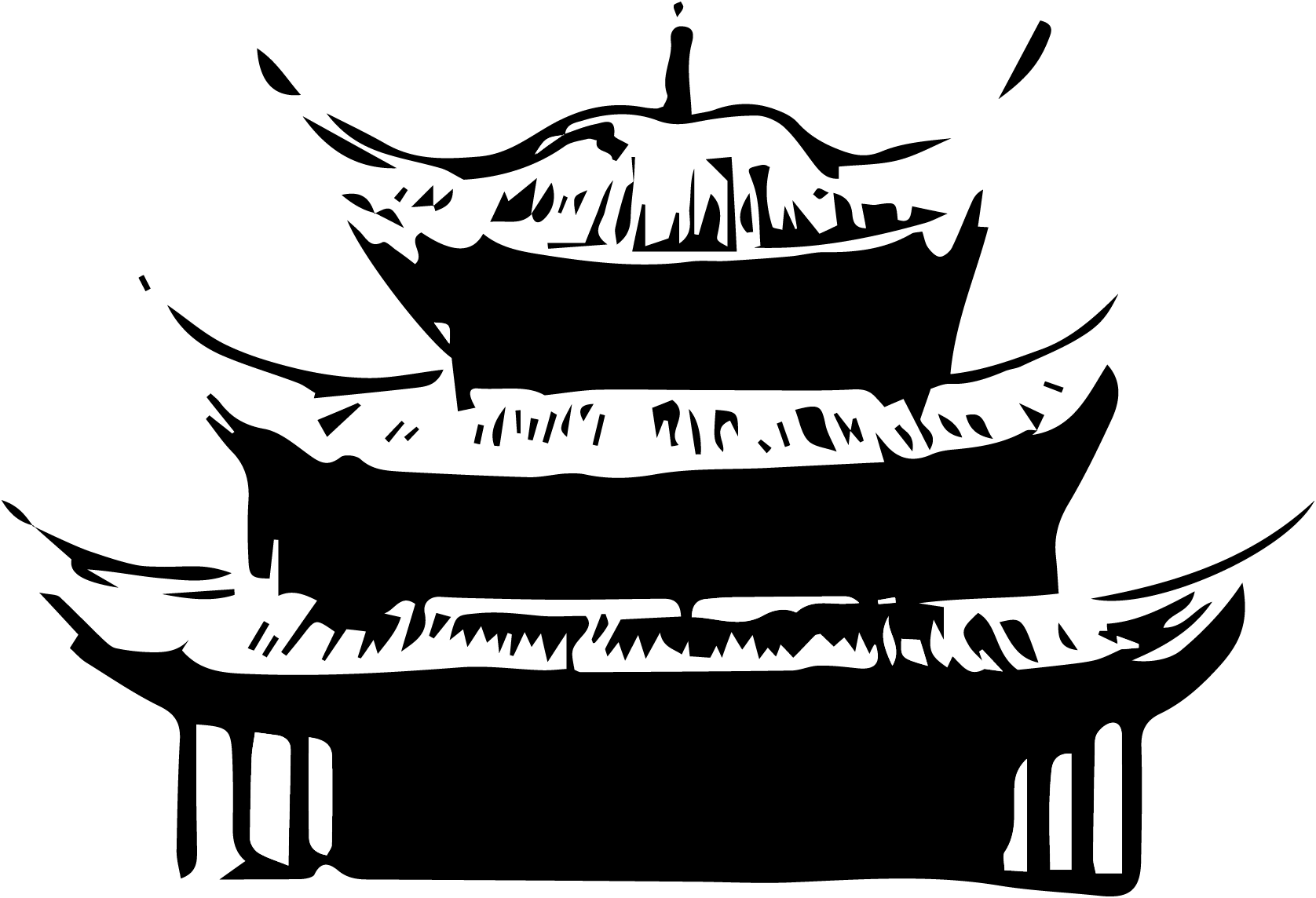Architecture on the Road
LABRANG MONASTERY: A TRUE TASTE OF TIBETAN CULTURE OUTSIDE TIBET
Labrang Monastery (拉卜楞寺, Lābǔlèng Sì) is undoubtedly one of the most fascinating places for Tibetan Buddhist culture. Located in the town of Xiahe (夏河) in the Gannan Tibetan Autonomous Prefecture of Gansu Province, China, at a height of almost 3000 m above sea level, it is one of the six most important Tibetan monasteries outside Tibet. The monks follow the Gelug school of Tibetan Buddhism (also called “Yellow hats”), founded in the fourteenth century.
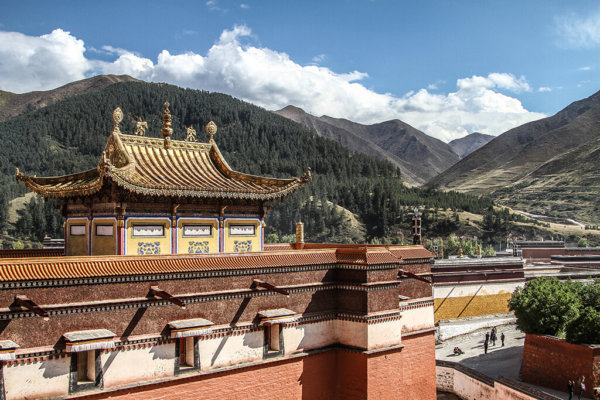
Founded in 1709, it once housed over 4000 monks, but that number was decimated by the Cultural Revolution. Currently more than a thousand monks live in the monastery, including the Jiamuyang, the living Buddha, third in importance in the Tibetan Buddhist religion after the Dalai Lama and the Panchen Lama.
The population of Xiahe is composed of 50% by Tibetans, 40% is han and 10% hui (Muslim Chinese), but the atmosphere around the monastery is very similar to Tibet.
This monastery is a perfect place for those who want to enjoy the true Tibetan culture, and its location outside the political border of Tibet makes it easily accessible with no need for special permits or tour operators (which is necessary to visit Tibet).


Tibetan architecture has Nepalese, Chinese and Indian influences, especially regarding religious architecture. The result of this mix of influences is a sober and austere traditional architecture, which has adapted uniquely to the needs of a high mountain climate.
The materials used are usually stone, rammed earth or mud, and cement, mainly used for thick external walls.
The wood, a rare material in Tibetan plateaus, is used mainly for the internal structures of the buildings of greater importance.
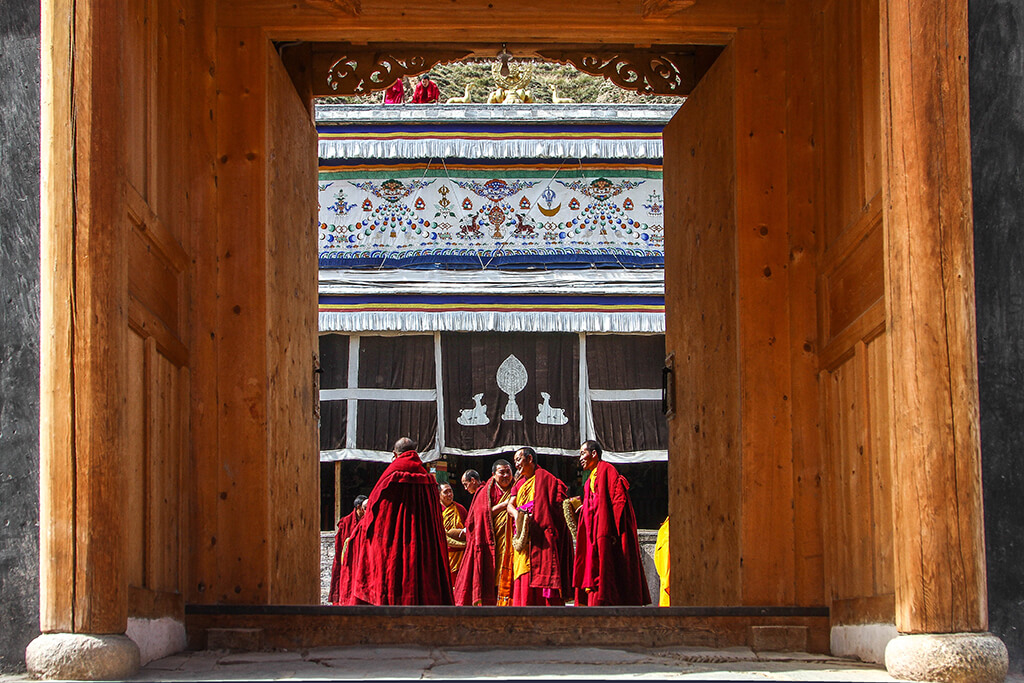

Despite the presence of many windows and large doors, the architecture has a stout and fortified appearance, conveying an idea of solidity and closure. The external walls are generally inclined by 10 degrees to protect against seismic activity. The optical effect is a slender building that grows upwards, but is also solidly anchored to the ground.
The interiors of the common buildings and dwellings are generally simple and frugal, while those of temples and palaces have intricately carved structures, paintings and decorations of the finest craftsmanship.
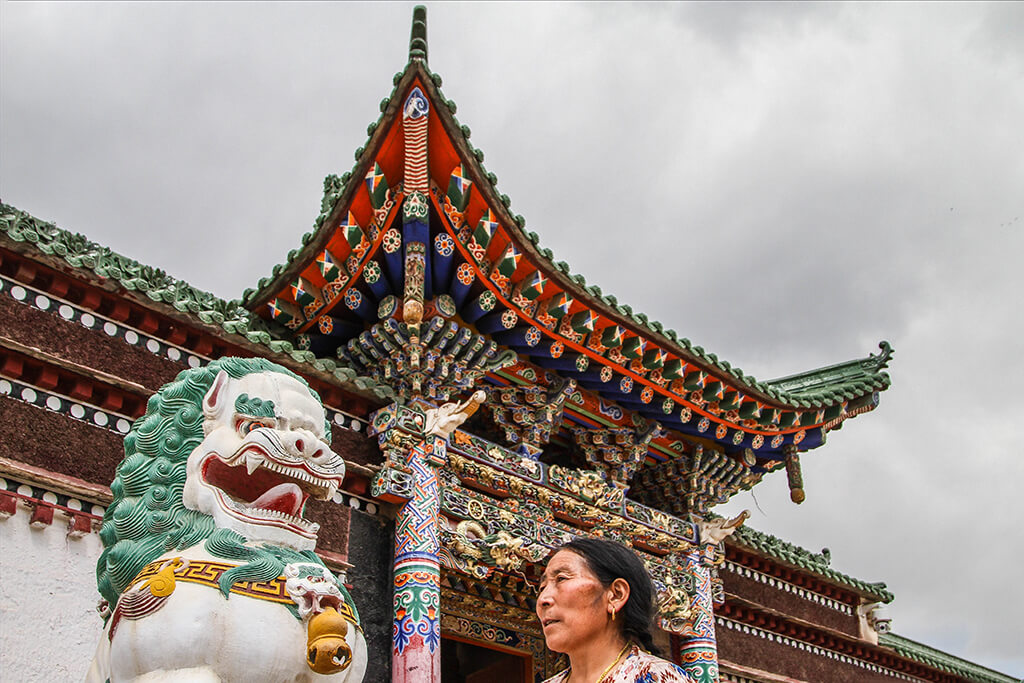
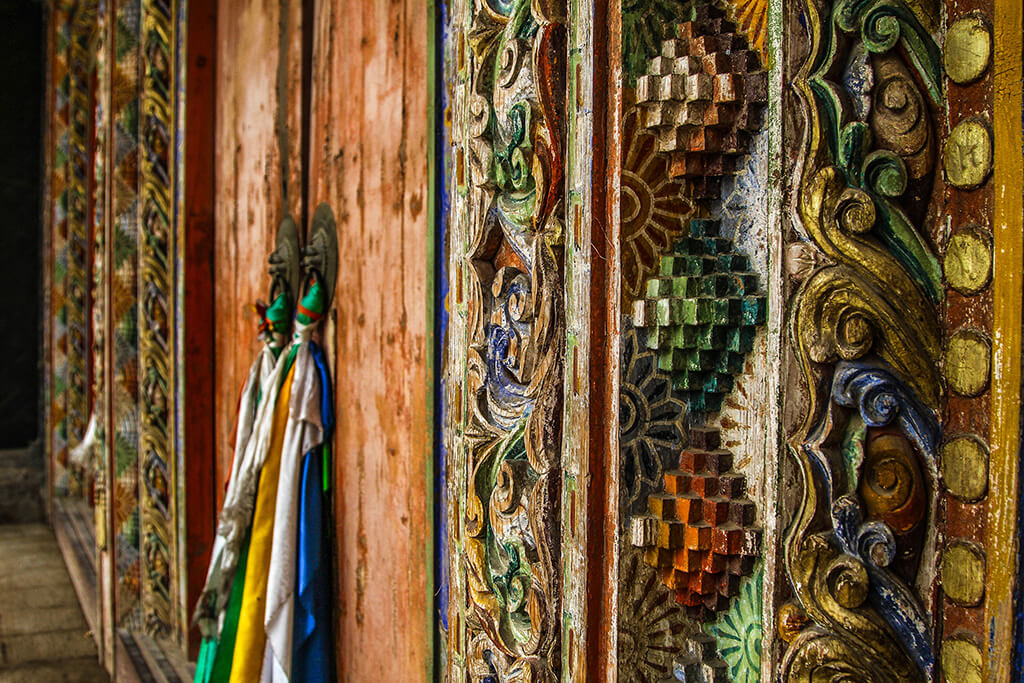
The internal structures of such important buildings are often made of beams, capitals, and wooden columns, which can be carved with symbols or decorated by paintings with bright colors (the most common are red, blue, green and gold).
In the multi-story buildings the structural elements become smaller and lighter. Each layer is important structurally and symbolically, as the higher levels symbolizes the importance of the building.
These 3 structural elements (beam, capital, and column) have a symbolic meaning as well. The number 3 occurs in many of the structures and components of Buddhist architecture because it represents its three main components: the teacher (Buddha), the teachings (Dharma), and the religious community (Sangha).
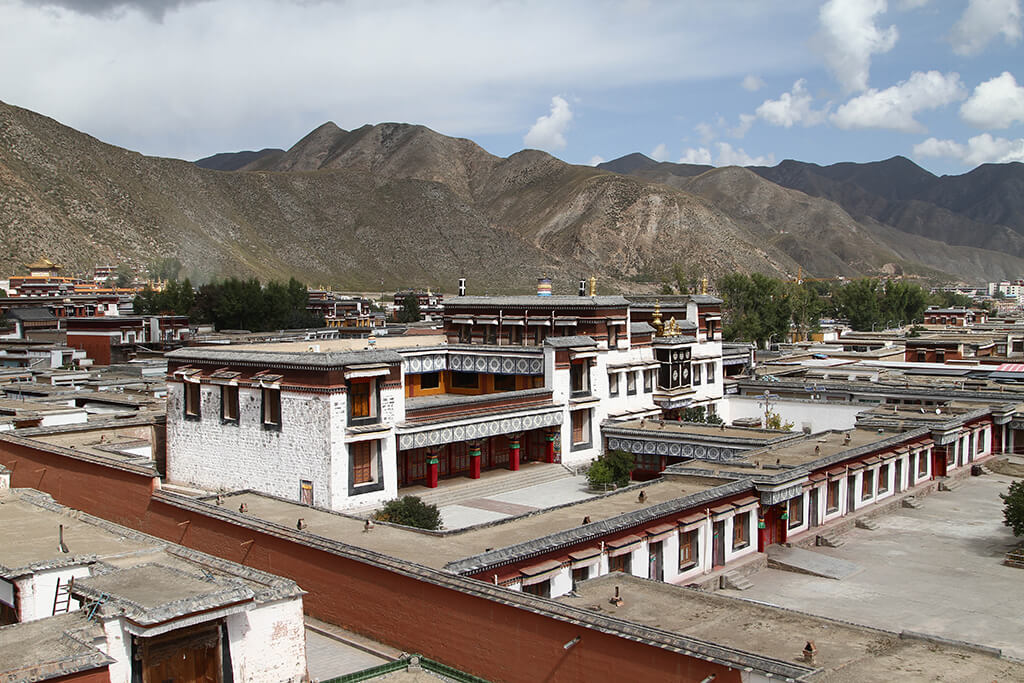

The roofs of the buildings are generally flat in order to keep the heat in the inner rooms and be more easily cleared of snow.
Some exceptions are religious buildings, which can be topped with an intricate pitched roof of Chinese influence, made of precious materials and richly decorated.
A golden wheel between two deer is often placed on top of the roof. The wheel represents Buddha the deer represents human beings, and the piece as a whole symbolizes human learning from Buddha.
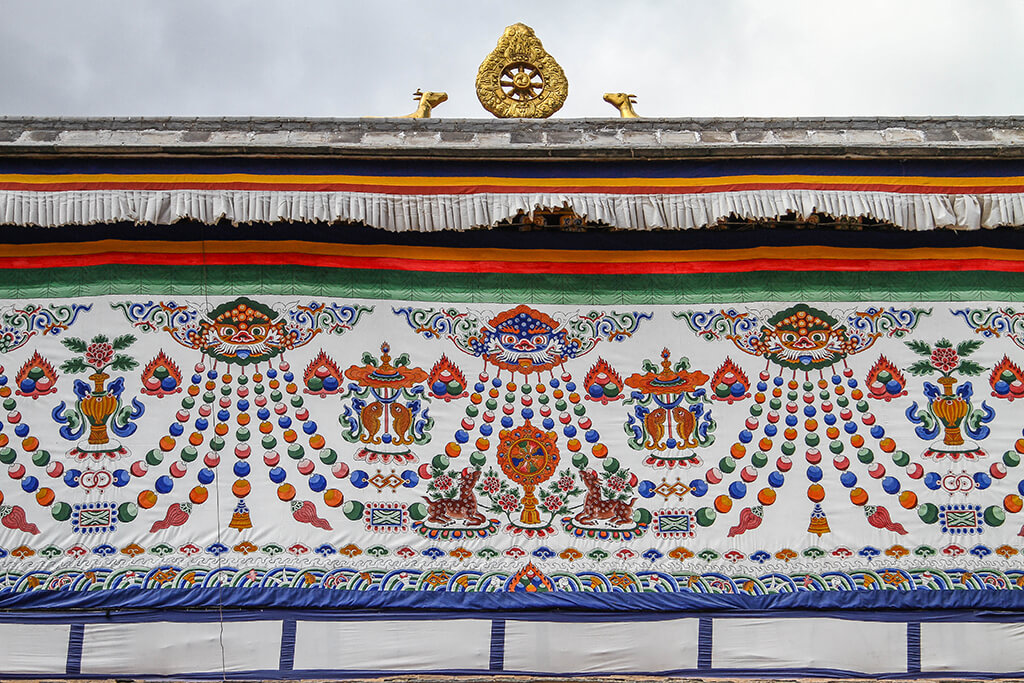

Doors and windows are often covered with red, white, and blue striped cloth. Even the doors and the tops of the buildings are often covered with large pieces of cloth, often embroidered with Buddhist symbols.
The colors used in Tibetan architecture are predominantly white, red and black.
The houses and common buildings are generally painted white with black contours for the windows and doors.
White in Buddhism symbolizes learning and knowledge.
It is also a very practical color for those who live at high altitude because it rejects ultraviolet radiation and strong sunlight.
Some of the most important buildings are painted red (for example, the Potala Palace in Lhasa and the ancient residence of the Dalai Lama).
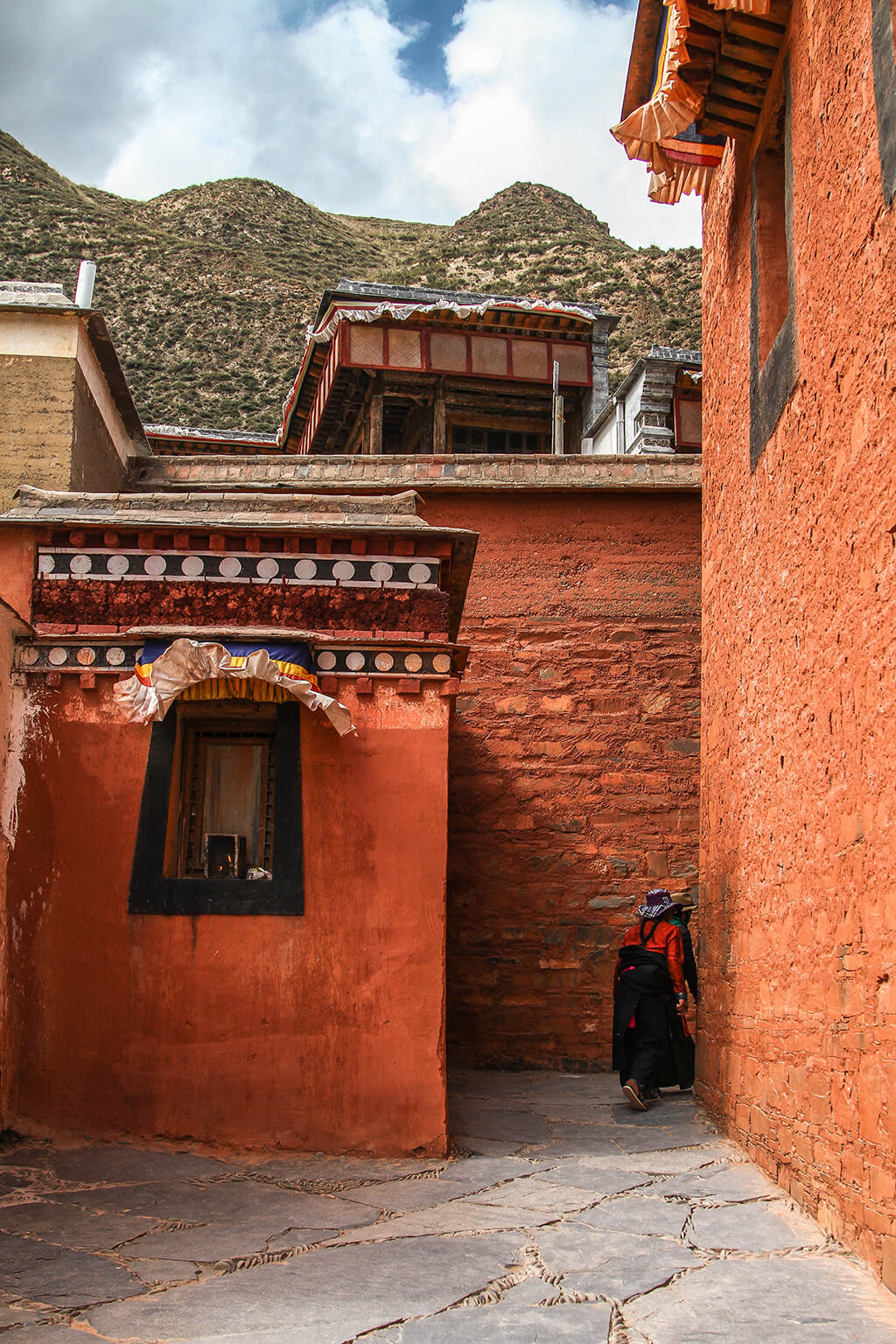
The red color is very dear and widespread in the Tibetan culture (just think about the monks’ robes). It represents bravery and life force.
The Tibetan passion for this color is explained by two theories.
The first, more practical and orthodox explanation, suggests that the red symbolizes the color of meat (especially yak or sheep), an integral animal of Tibetan culture, which has always been largely nomadic and focused on the breeding of herd animals.
The second, more spiritual explanation, refers to some traditions of the ancient Tibetan religion, where people used to paint their face with a red color to ward off ghosts and evil spirits. Over time, the tradition has moved from body painting to wall painting, especially in religious buildings (such as graves of important Buddhist personalities or temples).

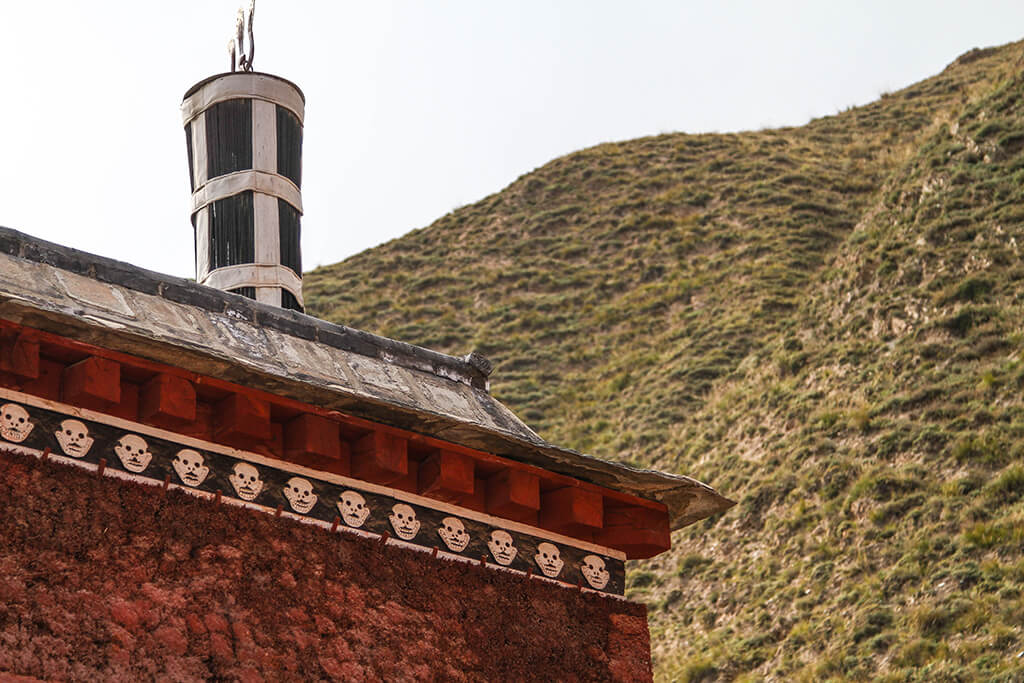
STUPA
The Stupa (also called chorten in the Tibetan language) are bell-shaped religious buildings tipped by a pinnacle. Usually they contain sacred texts, or relics and holy artifacts belonging to important monks or religious personalities.
They originated from India where it was custom to bury saints or their relics in similar mausoleums.

WHAT TO VISIT IN LABRANG MONASTRY
The Labrang monastery is the main attraction of the Gannan Tibetan Autonomous Region of Gansu Province. The complex is really impressive, big enough to be considered a small town (822,667 square meters), and is mainly characterized by the traditional Tibetan style with a little Chinese taste in some details and decorations.
Inside the monastery there are six learning institutes (two of esoteric Buddhism, medicine, theology, astrology, and law), a Sutra debate hall, eighteen halls, and thousands of dwellings for monks. You can admire an incredible collection of Buddhist statues, sutras (the collection of sacred teachings of the Buddhism), religious artifacts, yak butter statues, thangka (special kind of Buddhist paintings), and precious relics, all illuminated by the dim light of yak butter candles, giving the interior spaces a flickering light and sometimes a pungent smell.
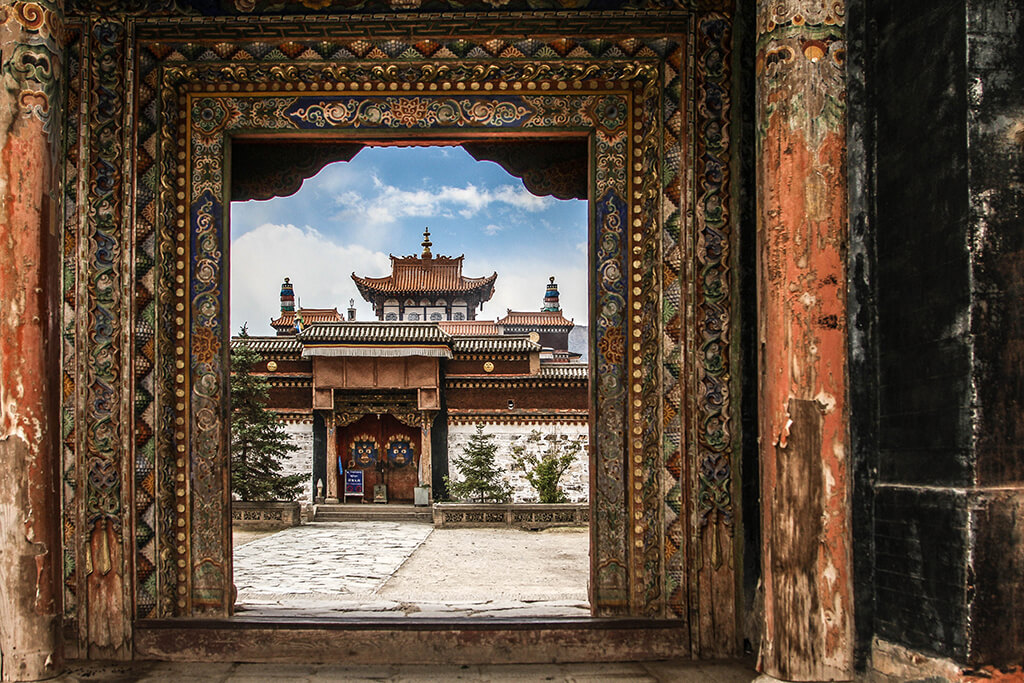
GRAND SUTRA HALL (Wensi College)
Located in the center of the monastery, this building is one of the most imposing and representative of the culture.
Inside there is the Grand Sutra Hall, the most important prayer hall, where the monks gather every day to recite their rituals together.
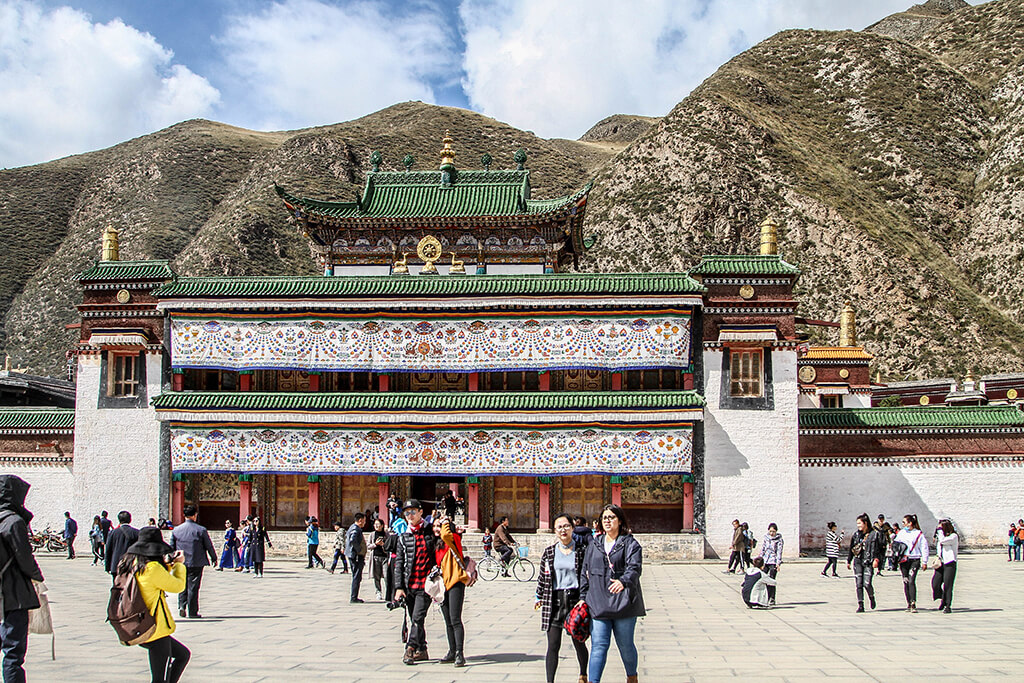
GOLDEN TILE TEMPLE (Serkung)
The highest building of the whole monastery is easily recognized by the pitched roof covered in gold.
Some of the decorative features were made by Nepalese artisans, influencing the architectural taste and look of the building.
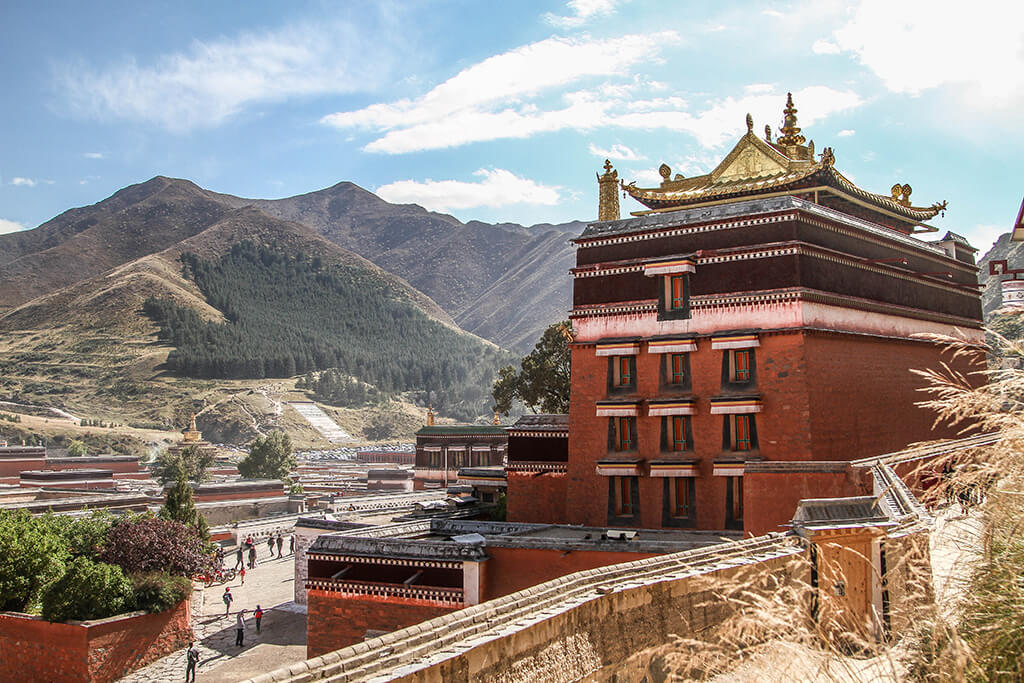
THE MEDICAL COLLEGE
The Medical College is home to one of the most important clinics and pharmacies of the Gannan, where specialists of tibetan medicine (one of the oldest practices in the world) study and prepare traditional tibetan medications using natural ingredients.
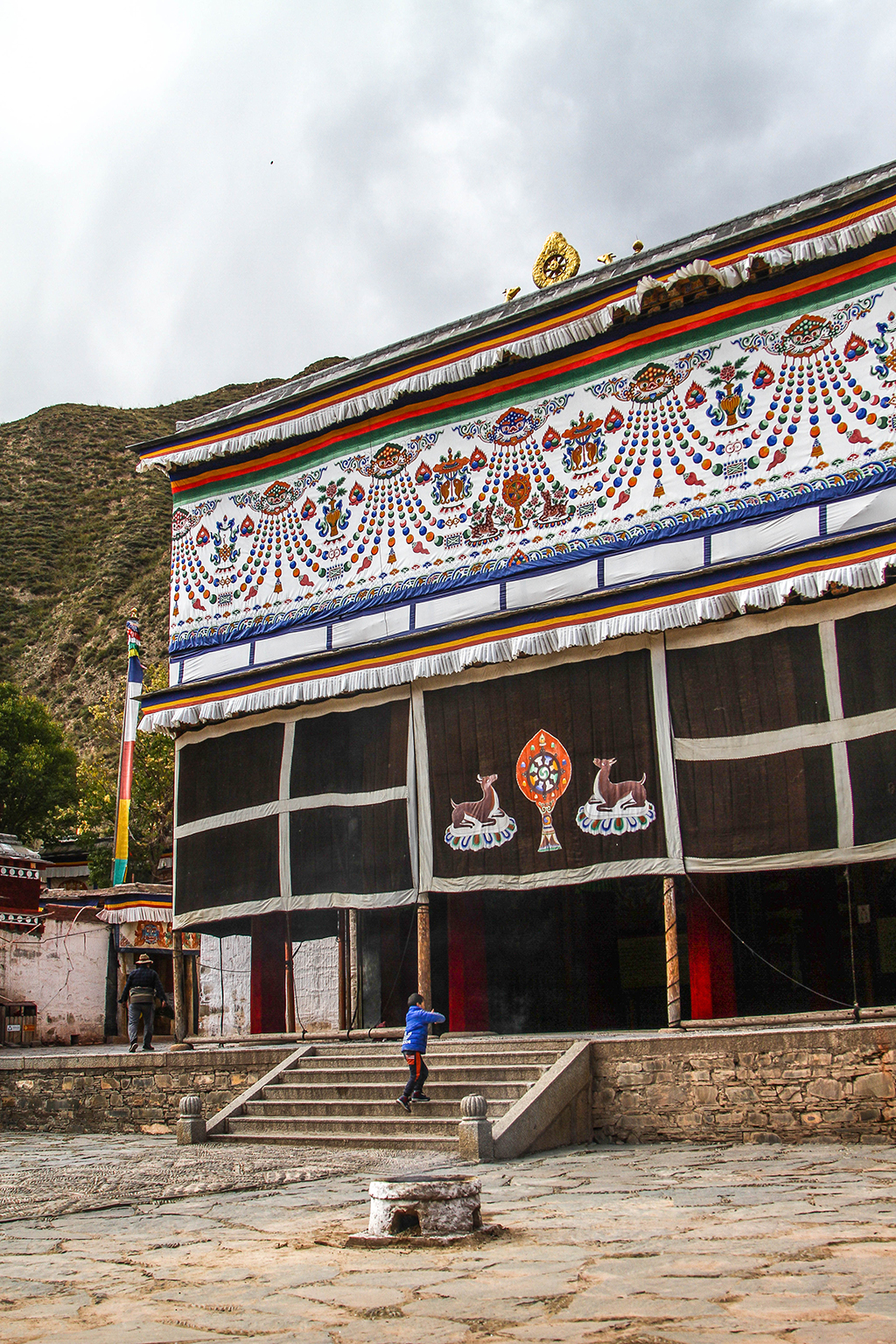
MANJUSHRI TEMPLE

GONGTAN PAGODA
Located in the southern part of the monastery, close to the river, this grandiose religious building is capped by a golden pagoda. You can climb up the roof to the base of the golden stupa and enjoy an incredible view of the monastery and the mountains in the background.
The entrance fee for Gongtan Pagoda is charged separately and costs 20 rmb.

To enjoy an even more breathtaking view and appreciate the complexity of Labrang, I suggest crossing the river and climbing the hill in front of the Monastery. Tis vantage point allows you to admire all the parts of this huge religious complex and the tibetan district of Xiahe as well. The hill also serves as a display during the Losar celebration, the Tibetan New Year that falls in late February or early March according to the lunar calendar, when a huge Thangka (a special kind of Buddhist painting) is displayed on a wall built upon it’s side.
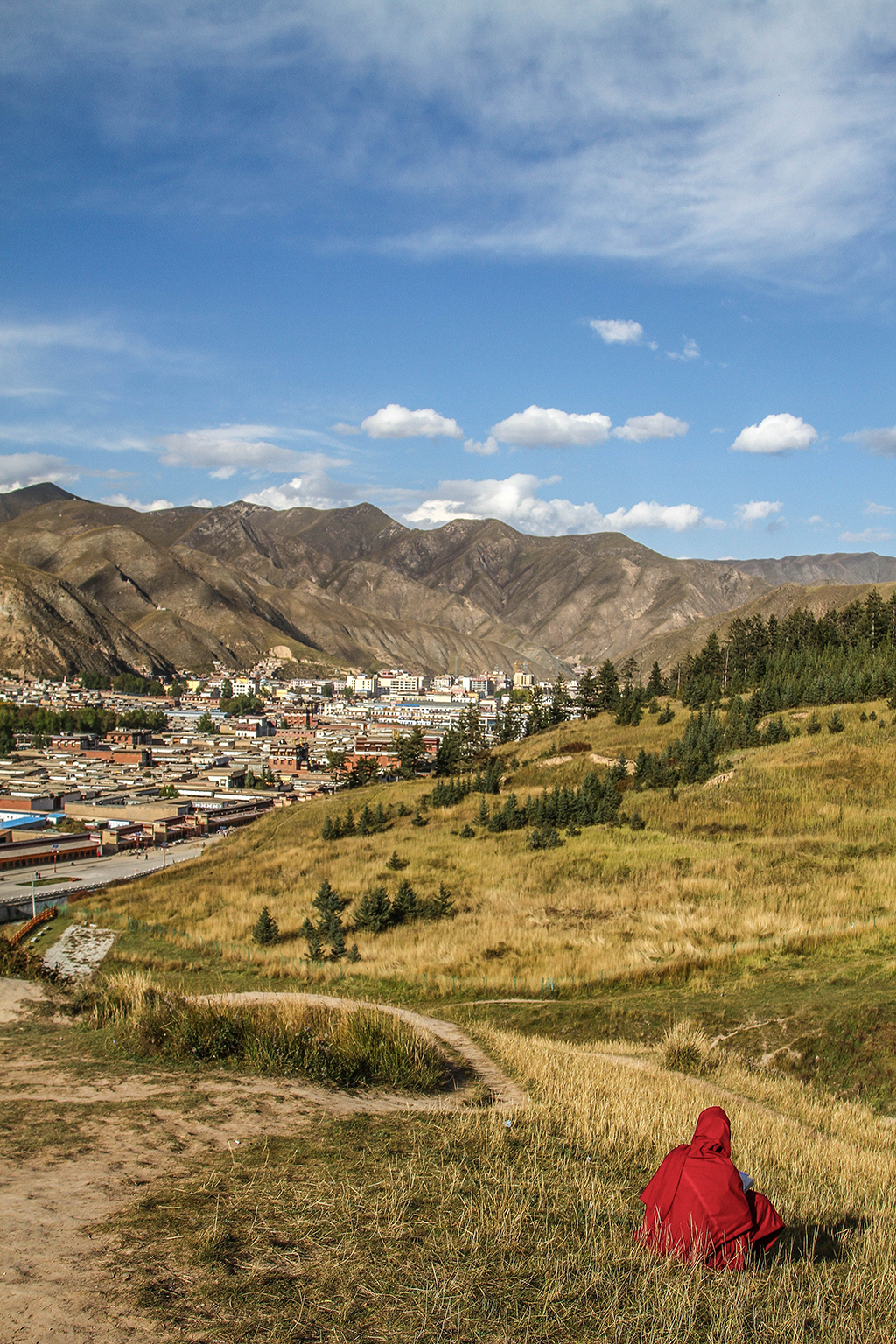
The monastery of Labrang spans well beyond the part that is normally visited by visitors and pilgrims. The western part is mostly overlooked, but there is the female monastery, the Esoteric Buddhist college and the Tibetan quarter of Xiahe, which are all worth checking out.
Nuns with shaved heads and lay monks with red and white robes and long, tied up hair wander around the halls and the decadent streets of this part of the city, largely insulated. from the outside world.
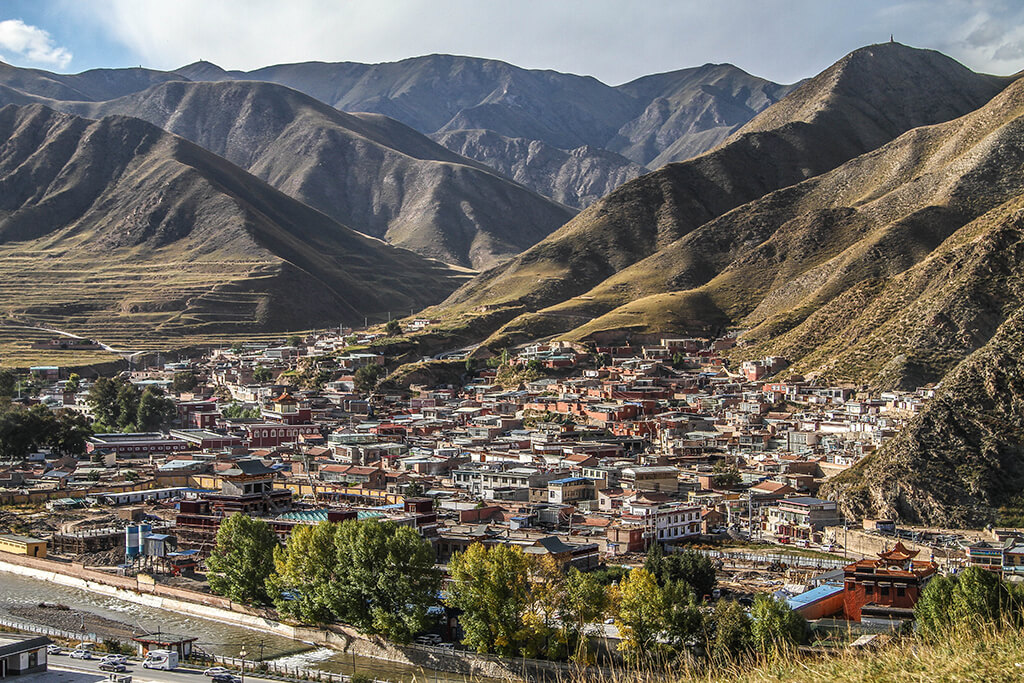
THE KORA (Corridor of Prayer Wheels)
The Kora is a prayer wheel circuit that extends along the entire perimeter of the monastery. It is the longest in the world of its kind at about 3.5 km long and features over 1,700 colorful hexagonal scripture wheels.
Pilgrims walk around the Kora clockwise from the early morning, rotating the wheels, and praying for absolution from their problems.
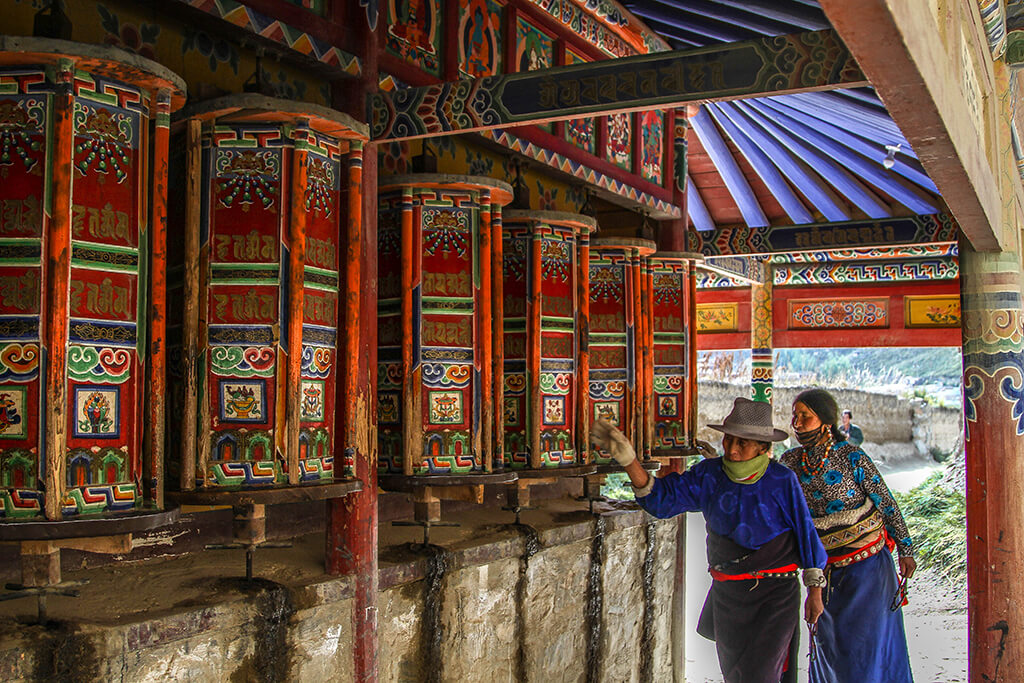
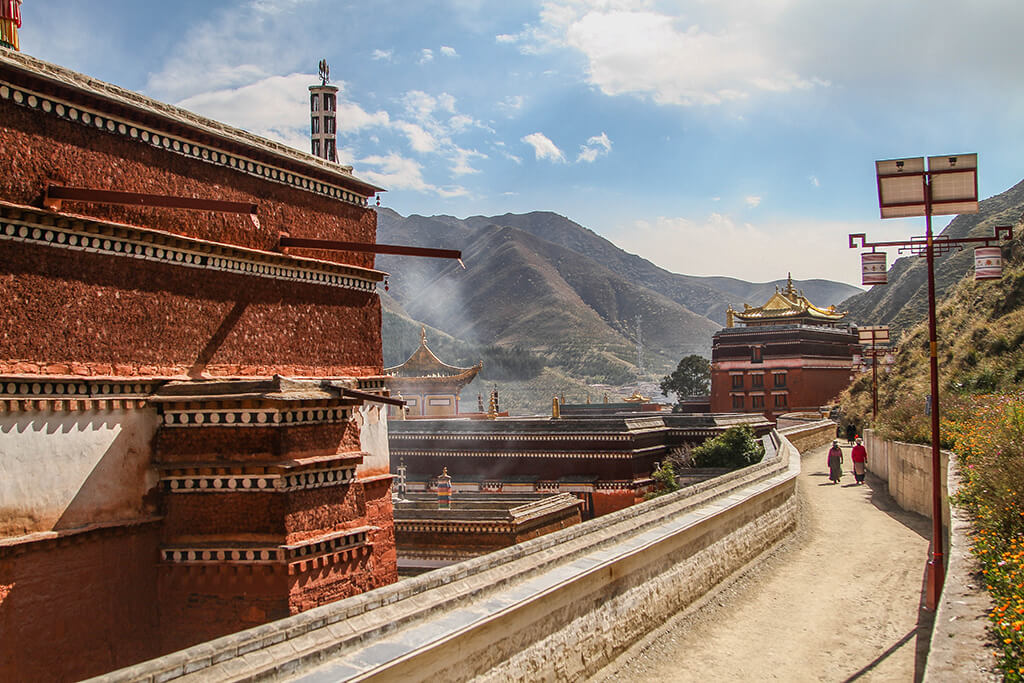

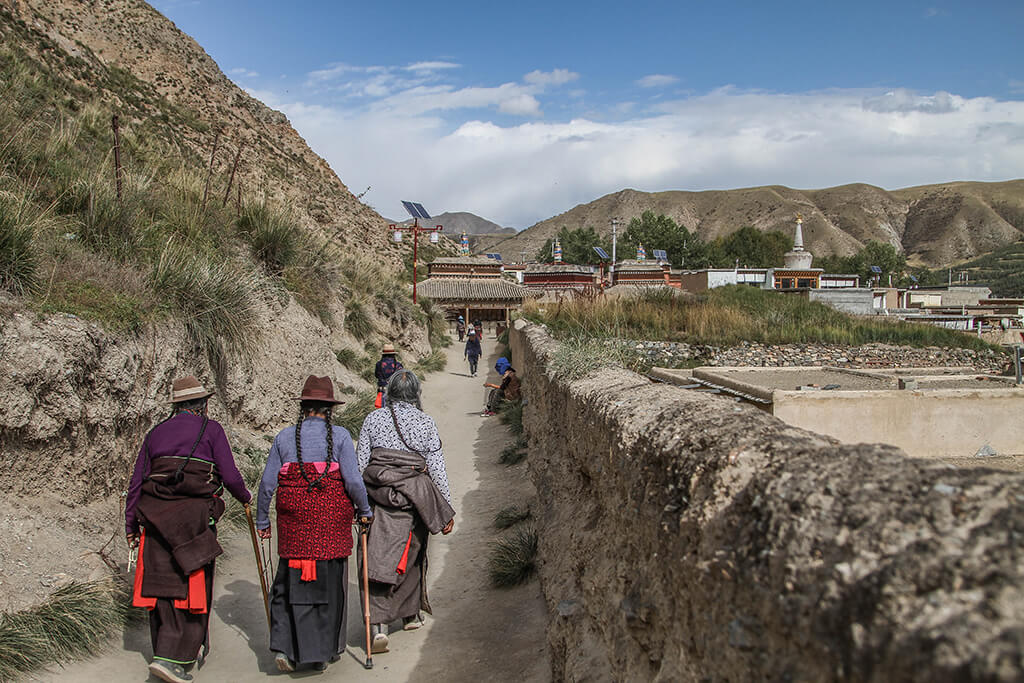
In Xiahe there is no train station, so the easiest way to reach the town is by bus.
BY BUS
Departing from Lanzhou in Gansu Province, it is possible to catch a long distance bus from:
– Lanzhou South Bus Station (兰州南汽车站 – Lánzhōu nán qìchē zhàn)
– Lanzhou Passenger Transport Center, located at Lanzhou East Railway Station (兰州火车东站 – Lánzhōu huǒchē dōng zhàn)
From both stations there are a few busses connecting Lanzhou to Xiahe 5 times a day, from 7.30am to 3pm, and the ride takes around 4h.
Another option is to take a bus from Hezuo, the capital city of Gannan Tibetan Autonomous Prefecture. From Hezuo there are busses almost every half hour directed towards both Lanzhou (approximately 3h) and Xiahe (1h). Transferring in this city grants the opportunity to visit Hezuo’s splendid Milarepa Buddhist Palace, a unique temple that can’t be missed by architecture enthusiasts.
Departing from Xinin in Qinghai Province:
You can catch a long distance bus at Xining Passenger Transport Center, located in the South Square of Xining Railway Station (西宁火车站 – Xīníng huǒchē zhàn). The ride takes about 6h.

The city of Xiahe and the Gannan Autonomous Prefecture offer many breathtaking excursions. Just a few kilometers from the city there are peaceful grasslands (Sangke grassland, which recently become very touristy, and Gianjia grassland, still intact and far from mass tourism), Tibetan monasteries, and mountainous plateaus. There are a lot of options that cater to fans of nature and architecture.
It is possible to reach the towns in the area (Langmusi, Linxia, Hezuo etc.) by local bus, but to visit the surrounding countryside you need to hire a driver for the day (surely your hotel can help arrange this).

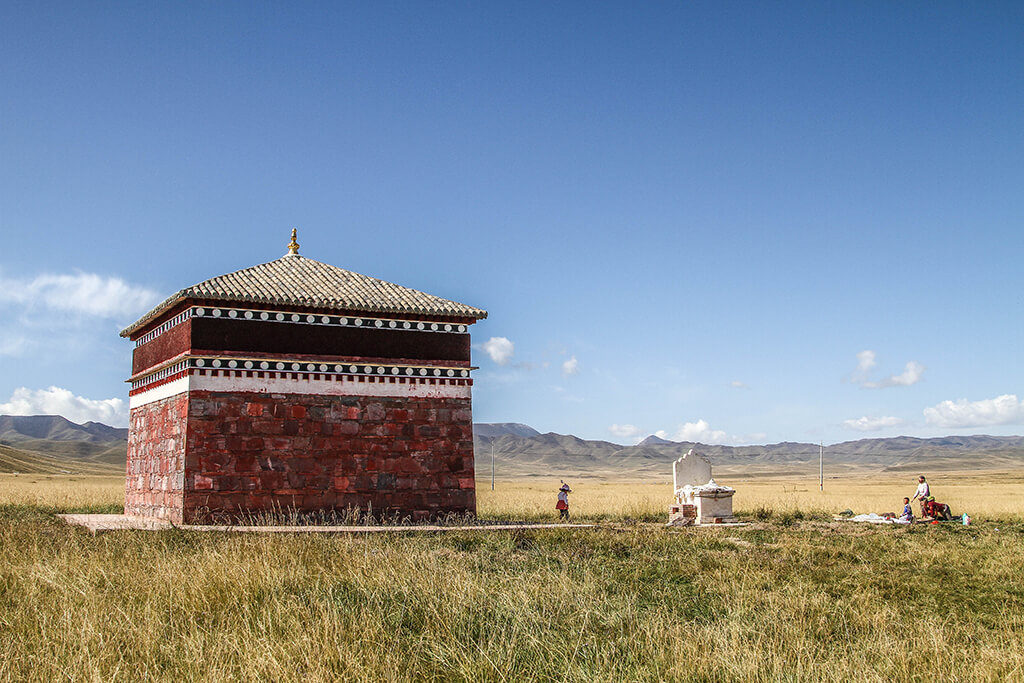
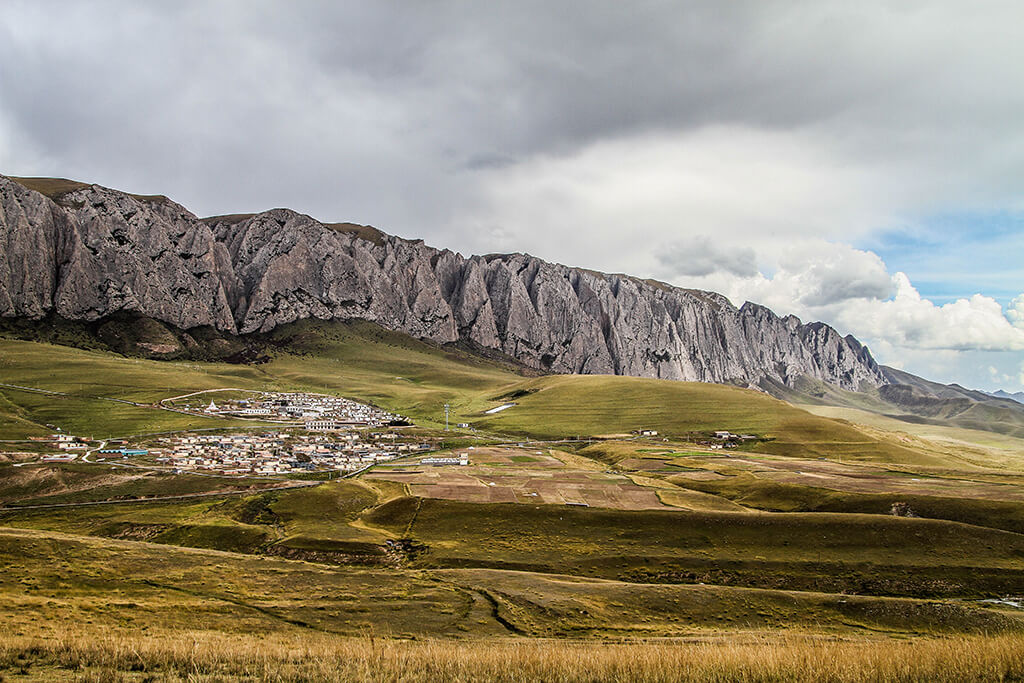
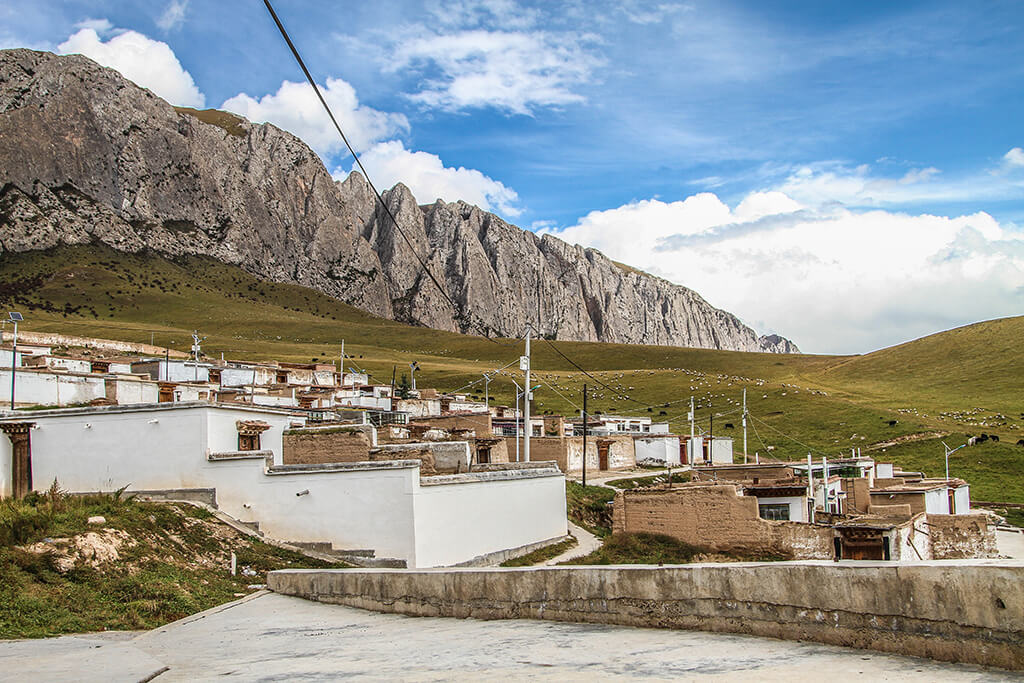
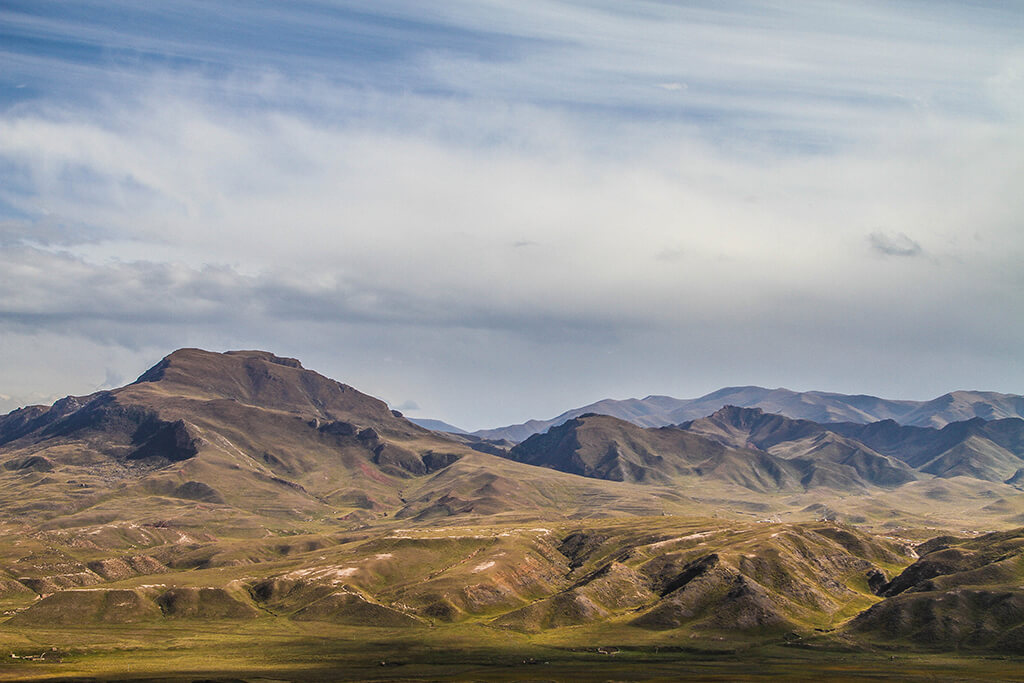
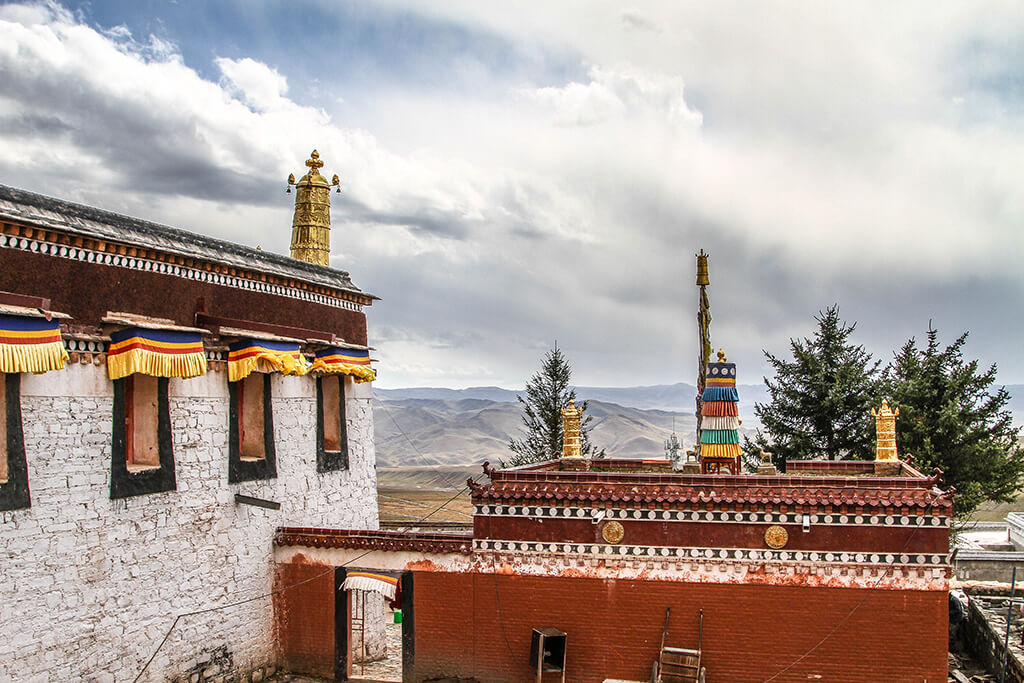
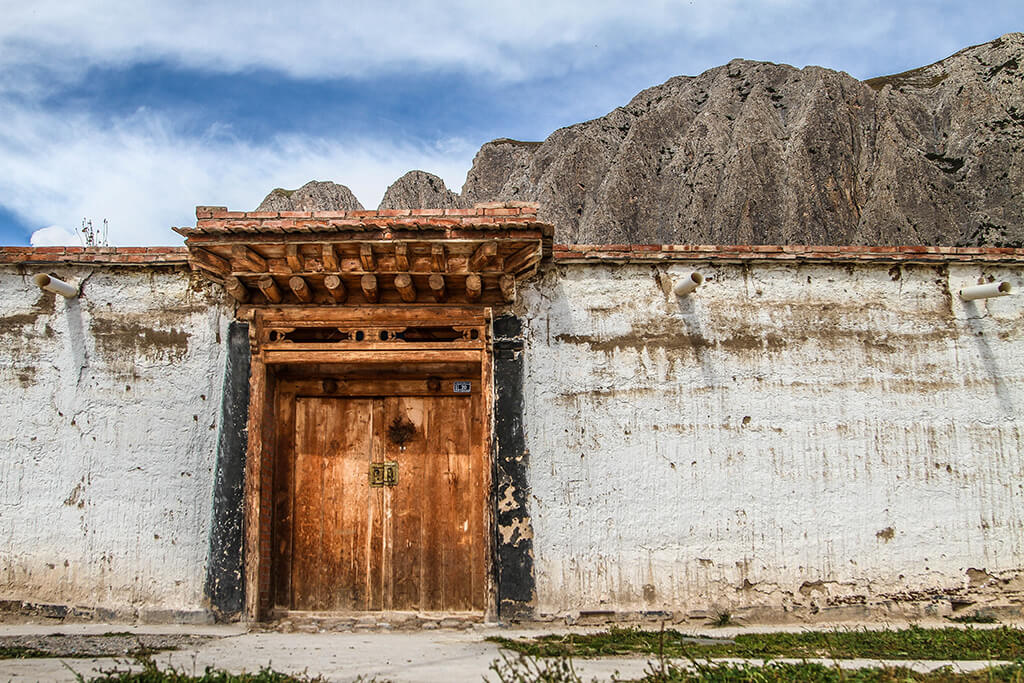
The Monastery of Labrang is a unique and fascinating place, where the biting mountain air mixes with the solemn nature of a religious institution of great importance.
Wandering with the monks of all ages and walking the Kora between elegantly dressed Tibetan or Mongolian pilgrims brings the visitor back to a world far from the stress, hustle, and bustle of modern civilization.
The spirituality that emanates from this place is difficult to explain in words. Those who experience it will keep a piece alive inside their hears forever after.

IF YOU FOUND THIS POST INTERESTING AND INSPIRING, HELP ME TO SHARE IT WITH OTHER TRAVELERS!
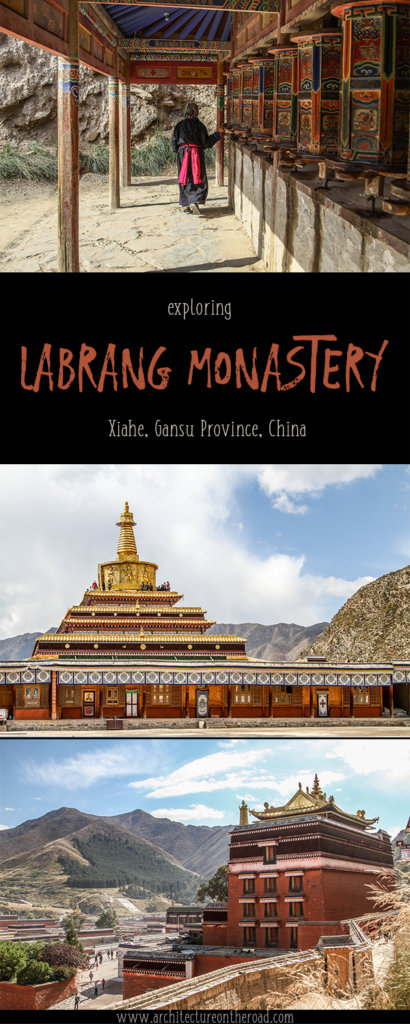
FRom the same province
stay tuned !
search for a destination
latest travel itineraries
latest CHINA articles
Text and pictures by
Architecture on the Road ©
Architecture on the Road
All rights reserved
All photographs on this site were taken and are owned by me (unless credited otherwise).
If you would like to use some of these photos for editorial or commercial purposes, many of these are available on Shutterstock (click the link below). Otherwise, please contact me on Instagram, Facebook, or by email.
Do not use my pictures without my written consent. Thank you!

